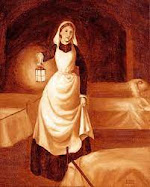Nursing Education and Role of Clinical Practicum in Nursing Education
Nursing is a job that is based on both theory and practice. The classroom gives students the basic information they need to understand health and illness, but the practice practicum is where this information is turned into useful skills. A very important part of nursing school is the clinical practicum, which is also called a clinical job or a clinical rotation.
It lets students put what they've learned into practice by
letting them work in real healthcare settings while being supervised by
experienced nurses and other healthcare workers. This hands-on training is very
important for developing the skills you need to be a good nurse.
Bridging the Gap Between Theory and Practice
One main job of the clinical practice is to connect what you've learned in the classroom with what you can do in real life. Nursing students learn about different illnesses, how to treat them, and how to care for patients in the classroom.
But it's very different from knowing these ideas in a theoretical way and using them in the real world. Students get a better understanding of the subject because the clinical practicum lets them see how these ideas are used in real life.
In the classroom, a nursing
student might learn about the steps needed to give medication, but during a
clinical practicum, they will actually do this job while being supervised.
Students learn the skills they need to do these kinds of jobs safely and well
by doing them themselves. It also helps them understand how important it is to
be precise and pay close attention, since making mistakes in a clinical setting
can have very bad results.
Developing Critical Thinking and Decision Making Skills
The clinical practicum also
plays an important role in nursing education by helping students develop
critical thinking and decision-making abilities. Nurses frequently operate in
fast-paced workplaces that require them to make immediate judgements based on
available information. The clinical practicum allows students to apply these
abilities in real-world scenarios.
Nursing students face a
variety of obstacles in the clinical world, requiring them to think critically
and make decisions that can have an impact on patient outcomes. For example,
they may need to evaluate a patient's condition, prioritise their care, and
determine the best course of action. These experiences help students acquire
the ability to think quickly and make educated judgements, which is required
for effective nursing practice.
Understanding the Realities of Patient Care
Nursing is more than simply
technical abilities; it also includes offering caring care to patients. The
clinical practicum exposes students to the reality of patient care directly.
They learn how to communicate with patients and families, offer emotional
support, and address their problems. These experiences help students acquire
the empathy and communication skills required to deliver holistic care.
During the clinical
practicum, students observe patients' issues, such as dealing with chronic
illnesses, managing with pain, and navigating the complexities of the
healthcare system. These experiences assist students gain a better grasp of the
human side of nursing and the value of treating patients with dignity and
respect.
Exposure to Various Healthcare Settings
Another key function of
clinical practicums is to expose students to various healthcare environments.
Nursing is a diversified career that allows nurses to work in a range of
settings, including hospitals, clinics, long-term care homes, and community health
centres. The clinical practicum allows students to explore these many
environments and grasp the particular problems and opportunities that each one
presents.
For example, a clinical
rotation in a hospital could include working in a fast-paced emergency room,
where students would learn how to manage acute medical issues and respond
rapidly to emergencies. A rotation in a long-term care facility, on the other hand,
may focus on providing continuing care to elderly patients suffering from
chronic diseases. These diverse experiences enable students to discover their
areas of interest and obtain a deeper understanding of the nursing profession.
Preparation for Real World Nursing Practice
The practical practicum's
main goal is to get nursing students ready for work in the real world. By the
time they finish, students should be ready to work as nurses and give patients
safe, skilled, and caring care. They are better prepared for this change thanks
to the field practicum.
Students learn how to do a
lot of different nursing jobs during their clinical rotations, from simple care
procedures to more complicated interventions. They also learn how to interact
well with patients and coworkers, work as part of a healthcare team, and handle
the demands of a busy healthcare setting. This training is very important for
their success as new nurses.





Give your opinion if have any.